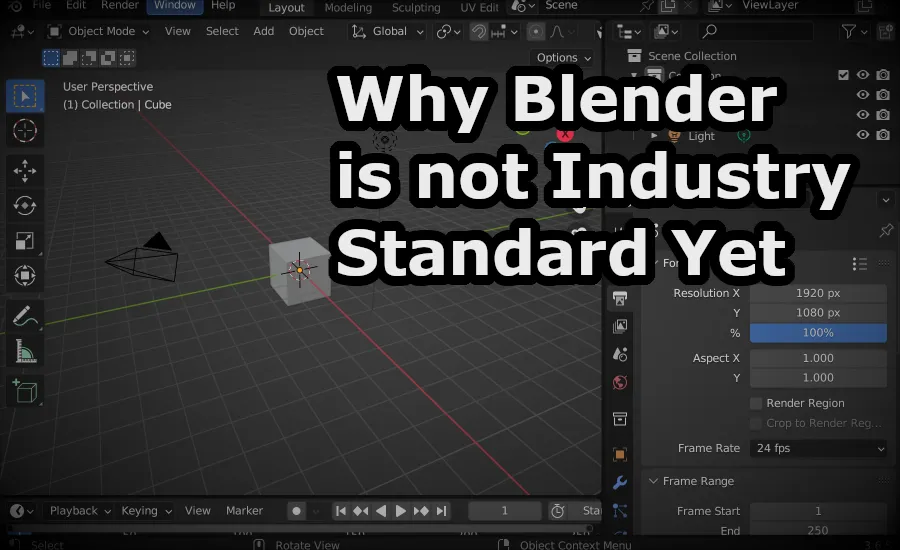
Why Blender is not Industry Standard Yet
While Blender is a popular and free software for 3D animation, modeling and rendering, many studios still use other software like Maya or Max. But why? Here are some factors that affect studios’ decisions.
Industry Standards
For many years same software are on the lead for visual effect, animation and game development. Many studios built their pipelines around these software and artists are already well-trained in using them. Switching to a different tool like Blender would require training and adaptation. Which might be extremely time consuming and costly.
Integration with Existing Tools
Studios often use a wide range of software and plugins that are built to work with Maya or Max. These tools include render engines, physics simulations, pipeline management systems etc. The compatibility and integration of these tools with Maya and Max are well-established, therefore, it is easy for studios to incorporate them into their workflows.
Flexibility and Customization
Maya and Max are highly customizable and flexible, and its possible to build custom tools and plugins to meet specific needs via their Python or C++ APIs. Even though Blender is also customizable, it only expsoses limited APIs over Python. Its not possible to create fast C++ algorithms or plugins for Blender. Currently only way doing this is by bluiding Blender from source code and redistributing it. This is not a viable option for studios.
Support and Documentation
Maya and Max benefit from wide ranging support resources and documentation such as official documentations, user forums, tutorials, and a large user base. These are very valuable for artists and technical professionals when facing issues or learning new techniques. Although Blender also has a strong community and support system, what it has is not extensive as the support available for Max and Maya.
Collaboration
studios often collaborate with other studios or freelancers, and they are using software that are widely adopted in the industry. Maya and Max have a strong presence in the industry, which makes it easier to share assets and work with external partners. While Blender has gained popularity, it does not have the same level of adoption, which could cause challenges when collaborating with other studios.
Conclusion
The choices of software ultimately depends on the specific needs and preferences of each studio. While many studios continue to use Maya or Max, there are also notable examples of studios successfully adopting Blender as their primary software. Blender’s open source nature and continuous development make it compelling option for those who are looking for a powerful and cost-effective solution.